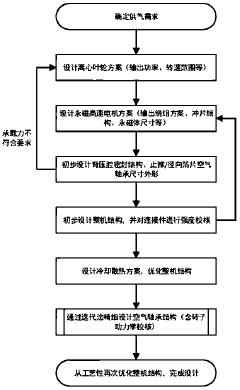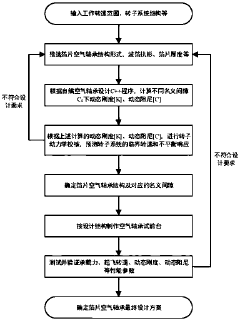Innovative Mechanical Designs - Eureka
JUN 17, 20253 MIN READ
Generate Your Research Report Instantly with AI Agent
Patsnap Eureka helps you evaluate technical feasibility & market potential.
Mechanical Design Innovations and Objectives
The primary objective is to explore the current landscape and future trajectory of innovative mechanical designs. This encompasses analyzing market demands, assessing technological maturity, and identifying key players and their solutions. Particular emphasis will be placed on elucidating core patents and seminal research works that underpin groundbreaking mechanical innovations.
Potential disruptive design approaches and their feasibility will also be examined, shedding light on promising avenues for future R&D endeavors in this domain. The overarching goal is to provide a comprehensive understanding of the state-of-the-art and emerging trends, paving the way for informed strategic planning and product development decisions.
Potential disruptive design approaches and their feasibility will also be examined, shedding light on promising avenues for future R&D endeavors in this domain. The overarching goal is to provide a comprehensive understanding of the state-of-the-art and emerging trends, paving the way for informed strategic planning and product development decisions.
Market Demand for Advanced Mechanical Designs
- Surging Demand
The market for advanced mechanical designs is witnessing a surge in demand driven by the need for improved efficiency, precision, and performance across various industries. - Automation and Robotics
The rise of automation and robotics in manufacturing, logistics, and other sectors is fueling the need for innovative mechanical solutions that enable precise, reliable, and high-speed operations. - Aerospace and Transportation
The aerospace and transportation industries are constantly seeking lightweight, durable, and aerodynamic mechanical designs to enhance fuel efficiency, reduce emissions, and improve overall performance. - Medical and Healthcare
The healthcare sector demands advanced mechanical designs for surgical instruments, prosthetics, and medical devices that prioritize precision, safety, and ergonomics. - Emerging Technologies
The advent of emerging technologies, such as additive manufacturing (3D printing), nanotechnology, and smart materials, is driving the demand for innovative mechanical designs that leverage these advancements.
Current State and Challenges in Mechanical Design
- Technological Limitations
Current mechanical designs face limitations in materials, manufacturing processes, and design complexity, hindering innovation and performance optimization. - Manufacturing Constraints
Traditional manufacturing methods impose constraints on design freedom, restricting the realization of intricate geometries and functional integration. - Design Complexity
As products become more complex, conventional design approaches struggle to handle the increased number of components and interactions, leading to suboptimal solutions. - Multidisciplinary Integration
Integrating multiple engineering disciplines, such as electronics, software, and materials science, into mechanical designs remains a challenge, limiting the development of smart and adaptive systems.
Existing Solutions in Mechanical Design
01 Innovative mechanical design methods
Various computer-aided design (CAD) tools, generative design algorithms, and optimization techniques for streamlining the design process, exploring novel solutions, and optimizing mechanical designs.- Innovative mechanical design methods: Computer-aided design (CAD) tools, generative design algorithms, sensitivity analysis, and parametric modeling approaches for efficient and innovative mechanical design solutions.
- Mechanical design optimization and evaluation: Methods and systems for optimizing and evaluating mechanical designs, considering manufacturing constraints, material properties, and performance requirements to improve efficiency, reliability, and cost-effectiveness.
- Innovative mechanical product design: Approaches for innovative and personalized design of mechanical products, incorporating user preferences, ergonomic considerations, and market trends for novel and user-centric designs.
- Mechanical design education and training: Educational and training methods for teaching and practicing mechanical design principles and techniques, including innovative laboratory setups, comprehensive test beds, and practical training devices.
- Reusability and modularity in mechanical design: Techniques for reusing and modularizing mechanical design components and subassemblies, enabling efficient design iterations and adaptations, and promoting design reuse and modularity.
02 Mechanical design visualization and manipulation
Techniques for displaying and manipulating geometric constraints, identifiers, and subparts of a design to facilitate exploration, modification, and reuse of mechanical design elements.Expand Specific Solutions03 Mechanical design for additive manufacturing
Methods and systems for optimizing mechanical designs specifically for additive manufacturing processes like 3D printing, considering unique constraints and opportunities.Expand Specific Solutions04 Innovative product and design integration
Approaches for integrating innovative designs into product development and commercialization processes, considering factors like ergonomics, manufacturing, and market demands.Expand Specific Solutions05 Educational tools for mechanical design
Various educational tools and platforms for teaching and training in mechanical design and manufacturing, providing practical experience, simulations, and hands-on learning opportunities.Expand Specific Solutions
Key Players in Mechanical Design Industry
The competitive landscape for innovative mechanical designs involves educational institutions contributing to early research, companies advancing towards commercial applications, and established firms driving industry standards and large-scale implementations.
Autodesk, Inc.
Technical Solution: Autodesk offers advanced mechanical design software like AutoCAD and Fusion 360, enabling 3D modeling, simulation, visualization, and collaboration for innovative designs.
Strength: Comprehensive toolset and strong industry presence. Weakness: High cost and steep learning curve.
GACW, Inc.
Technical Solution: GACW specializes in innovative mechanical designs for aerospace and defense, including advanced propulsion systems, lightweight structures, and high-performance materials, using simulation and testing.
Strength: High-performance designs for aerospace and defense. Weakness: Niche market focus and high development costs.
Core Innovations in Mechanical Design
Design method of air suspension high-speed direct-connection air blower
PatentActiveCN110569524A
Innovation
- A new design method that can shorten the design cycle of the whole machine, reduce design risks, and solve multiple key technical problems, making the performance and structure of the whole machine product reach the optimal solution.
- This method can effectively improve the efficiency and power of the whole machine, which is a very valuable technology.
Regulatory Landscape for Mechanical Designs
Innovative mechanical designs aim to develop novel mechanisms and structures that enhance efficiency, functionality, and sustainability. The market demand for such innovations is driven by the need for optimized performance, cost reduction, and environmental consciousness across various industries. Key technological challenges include material limitations, manufacturing constraints, and the complexity of integrating multiple components. The evolution of this field involves advancements in materials science, computational modeling, additive manufacturing, and biomimetic designs. Major players include research institutions, engineering firms, and technology companies exploring cutting-edge solutions. Current approaches focus on topology optimization, compliant mechanisms, and metamaterials. Core innovations revolve around shape-shifting structures, self-assembling systems, and multi-functional designs. Potential future directions include 4D printing, soft robotics, and the integration of smart materials for adaptive and responsive mechanisms.
Sustainability in Mechanical Design
Innovative mechanical designs aim to develop novel mechanisms and structures that enhance efficiency, functionality, and sustainability. This field explores cutting-edge materials, manufacturing techniques, and design principles to create groundbreaking solutions. Key areas include biomimetic designs inspired by nature, additive manufacturing for complex geometries, and smart materials with adaptive properties. Potential applications span robotics, aerospace, automotive, and medical devices. Ongoing research focuses on integrating advanced simulations, AI-driven optimization, and human-centered design methodologies to push the boundaries of mechanical innovation.
Unlock deeper insights with Patsnap Eureka Quick Research — get a full tech report to explore trends and direct your research. Try now!
Generate Your Research Report Instantly with AI Agent
Supercharge your innovation with Patsnap Eureka AI Agent Platform!

